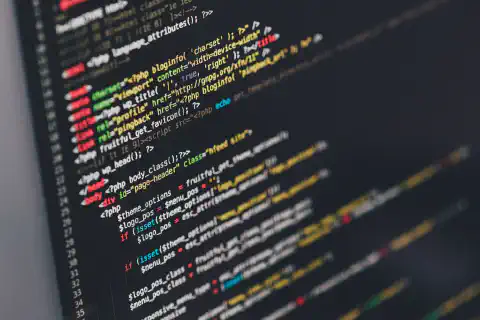Secure Coding in Python: Best Practices for Robust Application Security

Table of Contents
Best Practices for Secure Coding in Python: Ensuring Robust Application Security
Python is a popular programming language that is widely used for web development, data analysis, and artificial intelligence. As Python applications become more complex and widespread, it is crucial to prioritize application security. In this article, we will explore the best practices for secure coding in Python to ensure robust application security.
Understanding the Importance of Secure Coding in Python
Application security is a process that involves protecting software from unauthorized access, modification, theft, or destruction. It is crucial to ensure that software is secure, and one of the most critical aspects of application security is secure coding. Secure coding refers to the practice of writing code that is resistant to known security vulnerabilities such as SQL injection, cross-site scripting (XSS), buffer overflow, and others.
Python is a popular programming language used to develop a wide range of applications, including web applications, desktop applications, and scientific applications. However, like any other programming language, Python is susceptible to security vulnerabilities if not coded securely.
The Risks of Insecure Code
Writing insecure code can have serious consequences such as data breaches, exposing sensitive data, financial losses, and reputational damage. Hackers are constantly developing new methods to exploit vulnerabilities in software, so it is essential to follow secure coding practices to keep applications secure.
One of the most common security vulnerabilities in Python is SQL injection. SQL injection is a type of attack that allows an attacker to inject malicious SQL statements into an application’s database, potentially giving them access to sensitive data. Cross-site scripting (XSS) is another security vulnerability that can be exploited to steal sensitive information or perform other malicious activities.
Benefits of Secure Coding Practices
Adopting secure coding practices has several benefits. One of the primary benefits is that it helps reduce the risk of security breaches and other vulnerabilities that could cause significant damage to an organization. By adopting secure coding practices, developers can ensure that their applications are less susceptible to attacks like SQL injection and cross-site scripting.
Another benefit of secure coding practices is enhanced trust, credibility, and user experience. Users are more likely to trust and use applications that they know are secure. Secure applications also provide a better user experience by protecting user data and preventing malicious activities.
Finally, adopting secure coding practices can help organizations comply with industry regulations and standards. Many industries have specific regulations and standards that must be followed to ensure that applications are secure. By adopting secure coding practices, organizations can ensure that their applications meet these requirements.
Secure Coding Principles
Secure coding principles are techniques and guidelines that software developers can use to write secure code. Writing secure code is essential to protect against cyber attacks that can compromise sensitive data, cause financial losses, and damage an organization’s reputation.
Implementing secure coding principles can help developers create applications that are less vulnerable to attacks. The following are some of the fundamental secure coding principles:
Least Privilege Principle
The least privilege principle states that code should have the minimum permissions necessary to perform its functions. This principle ensures that even if the code is compromised, the damage it can cause is limited. By using the principle of least privilege, developers can help reduce the likelihood of a successful attack on the application.
For example, if an application needs to read a file, it should only have read permissions and not write permissions. This way, if an attacker gains control of the application, they cannot modify the file, which could lead to a security breach.
Defense in Depth
The defense in depth principle involves using multiple layers of security mechanisms throughout an application. This principle ensures that if one security layer fails, others will still provide protection. This approach helps mitigate the risk of a successful attack.
For instance, an application can have multiple layers of security, such as firewalls, intrusion detection systems, and access controls. Each layer provides an additional level of security, making it more difficult for attackers to penetrate the application’s defenses.
Input Validation and Sanitization
Input validation and sanitization involve checking user input to ensure that it is valid and free of malicious code. By doing so, developers can help prevent common security vulnerabilities such as SQL injection, cross-site scripting (XSS), and command injection.
For example, an application that allows users to enter their credit card information should validate and sanitize the input to prevent attackers from injecting malicious code that can steal the credit card information.
Secure Error Handling
Secure error handling involves handling errors and exceptions in a secure manner. This principle ensures that error messages do not reveal sensitive information or lead to further vulnerabilities. An attacker can use error messages to gain insight into an application’s vulnerabilities, so it is crucial to handle errors securely.
For instance, an error message that reveals the application’s database schema can provide valuable information to an attacker, making it easier for them to launch a successful attack. Developers should ensure that error messages provide enough information to help users understand the problem without revealing sensitive details.
Implementing these secure coding principles is essential to create applications that are less vulnerable to cyber attacks. Developers should always keep security in mind when writing code and follow best practices to ensure the application’s security.
Python-specific Security Best Practices
While the secure coding principles outlined above apply to any programming language, there are several Python-specific security best practices to keep in mind when writing Python code:
Using Safe Libraries and Modules
One of the benefits of Python is its vast array of libraries and modules. However, not all libraries and modules are secure. Developers should only use third-party libraries and modules from trusted sources and ensure they are up to date.
It is also important to note that some libraries may have security vulnerabilities that have not yet been discovered. Developers should stay up to date on any security advisories related to the libraries they are using and take appropriate action to mitigate any potential risks.
Avoiding Common Python Security Pitfalls
Python is a dynamic language, which means that variables can change type during runtime. This flexibility can lead to common security pitfalls such as buffer overflow and string injection. Developers should use Python’s built-in string formatting and concatenation functions to avoid these security vulnerabilities.
Another common security pitfall in Python is the use of the eval function. This function allows arbitrary code execution and should be avoided whenever possible. Instead, developers should use safer alternatives such as the ast module or regular expressions.
Securing Data Storage and Transmission
Data storage and transmission are common targets for attackers. To ensure that stored data is secure, developers should use strong encryption algorithms and secure storage mechanisms such as a password manager. Additionally, data in transit should always be transmitted over a secure channel such as HTTPS.
It is also important to consider the security of any third-party services or APIs that are used to transmit or store data. Developers should thoroughly research and vet these services to ensure they meet security best practices and comply with any relevant regulations such as GDPR or HIPAA.
By following these Python-specific security best practices, developers can help to mitigate the risk of security vulnerabilities in their code and protect sensitive data from attackers.
Implementing Secure Authentication and Authorization
Authentication and authorization are critical components of web application security. Authentication involves verifying the identity of a user, while authorization involves granting access based on a user’s privileges. The following are some of the best practices for implementing secure authentication and authorization in Python:
Password Security Best Practices
Passwords are a common authentication mechanism. To ensure that passwords are secure, developers should use strong password policies such as minimum length requirements, complexity rules, and password expiration. Additionally, passwords should be stored securely using hashing and salting techniques.
It is important to note that passwords are often the weakest link in a web application’s security. Passwords that are too short or simple can be easily guessed or cracked, while passwords that are reused across multiple sites can lead to a domino effect of security breaches. Therefore, it is important to educate users on password best practices and enforce strong password policies.
Role-Based Access Control
Role-based access control (RBAC) is a method of granting access based on a user’s role or job function. This approach ensures that users only have access to the resources necessary to perform their job. Implementing RBAC can help prevent unauthorized access to sensitive data and functions.
RBAC can be implemented using a variety of techniques, such as access control lists (ACLs) or attribute-based access control (ABAC). It is important to consider the specific needs of the application and its users when implementing RBAC, as well as to regularly review and update roles and permissions as necessary.
Session Management and Security
Sessions are commonly used by web applications to maintain state between requests. To ensure session security, developers should use HTTPS to transmit session cookies and store session data securely. Additionally, developers should implement measures to prevent session hijacking or fixation attacks.
Session hijacking and fixation attacks occur when an attacker gains access to a user’s session ID, either by intercepting it in transit or by tricking the user into revealing it. To prevent these attacks, developers can use techniques such as session ID regeneration, IP address validation, and user agent validation.
By following these best practices, developers can help ensure that their web applications are secure and protected against common authentication and authorization vulnerabilities.
Regularly Auditing and Updating Your Code
Even with the best secure coding practices, vulnerabilities can still be introduced into an application. Regularly auditing and updating the code can help identify and fix vulnerabilities before they are exploited.
Code Review for Security
Code reviews are an essential part of the software development process. Developers should conduct code reviews with a focus on security to identify and fix security vulnerabilities in the code. Additionally, code reviews can also help developers adhere to secure coding principles and best practices.
During a code review, developers should look for common security vulnerabilities, such as SQL injection and cross-site scripting (XSS) attacks. They should also ensure that sensitive data is properly encrypted and that access controls are in place to prevent unauthorized access to sensitive information.
Code reviews can be conducted manually or through the use of automated tools. Manual code reviews involve a thorough examination of the code by a developer or security professional. Automated code reviews use tools that scan the code for potential vulnerabilities.
Automated Security Testing
Automated security testing involves using tools to scan code for potential vulnerabilities automatically. These tools can help identify security risks quickly and efficiently. Developers should use automated security testing in conjunction with code reviews to ensure that code is secure.
Automated security testing tools use a variety of techniques to identify potential vulnerabilities, such as static analysis, dynamic analysis, and fuzz testing. Static analysis involves examining the code without executing it, while dynamic analysis involves executing the code in a test environment. Fuzz testing involves sending random or unexpected input to the application to see how it responds.
Automated security testing can help developers identify vulnerabilities that may have been missed during a manual code review. However, it is important to note that automated tools are not perfect and may produce false positives or false negatives.
Staying Informed on Security Vulnerabilities and Updates
Staying informed about security vulnerabilities and updates is essential for maintaining application security. Developers should regularly review security bulletins and patches from vendors and security researchers to stay up to date on potential security risks and updates.
Developers should also be aware of common attack vectors and techniques used by attackers, such as phishing, social engineering, and brute force attacks. By understanding these techniques, developers can better protect their applications from potential attacks.
In addition to staying informed about security vulnerabilities and updates, developers should also keep their software and systems up to date with the latest security patches and updates. This can help prevent known vulnerabilities from being exploited.
Overall, regularly auditing and updating code, conducting code reviews for security, using automated security testing, and staying informed about security vulnerabilities and updates are all important steps in maintaining application security.
Conclusion: Building a Culture of Security in Your Python Development
Secure coding practices are an essential aspect of application security. By following the best practices outlined in this article and implementing a culture of security in their development process, developers can help ensure robust application security.






